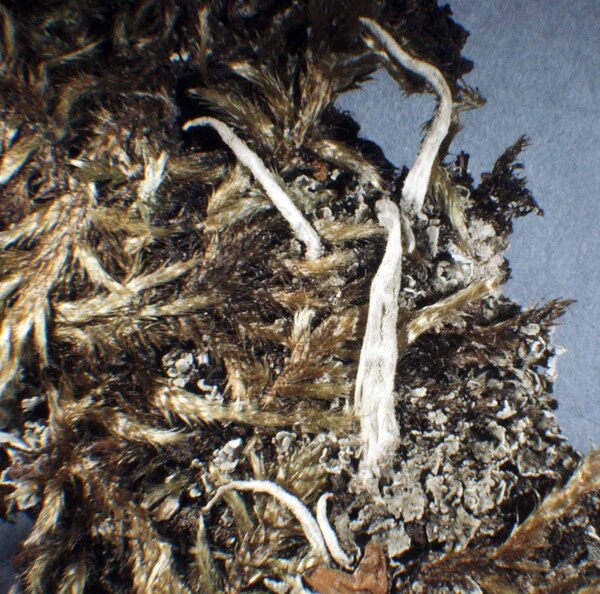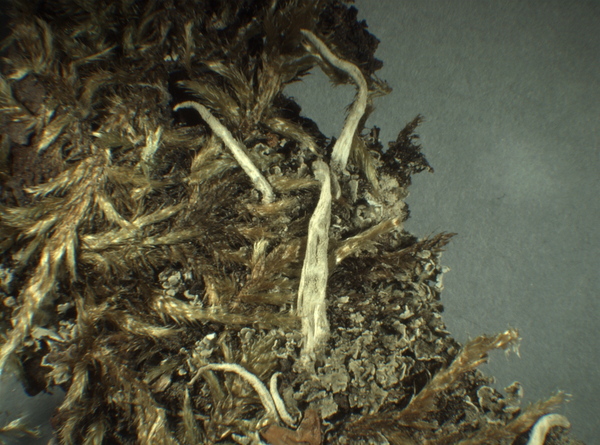Cladonia bacilliformis (Nyl.) Sarnth.
Österr. bot. Z., 46: 264, 1896. Basionym: Cladonia carneola var. bacilliformis Nyl. - Syn. Meth. Lich., 1, 2: 201, 1860.
Synonyms:
Distribution: N - TAA (Dalla Torre & Sarnthein 1902).
Description: Primary thallus squamulose, persistent or usually evanescent, the squamules thin, 0.2-0.3 mm wide, to 3 mm long, entire to crenate-lobate, yellowish green above, sorediate. Podetia bacilliform, bright yellowish green, (5-)10-20(-25) mm tall (usually up to 10 mm), up to 1 mm thick, simple, slightly corticate only at the base, otherwise densely farinose-sorediate, cupless or more rarely with very narrow cups. Apothecia very rare, ochraceous or very pale brown. Asci 8-spored, clavate, thickened at apex, with a K/I+ blue tholus and a K/I+ strongly blue outer gelatinous sheath, Cladonia-type. Ascospores 1-celled, hyaline, ellipsoid. Pycnidia on primary squamules or at tips of podetia, ovoid to cylindrical, with a colourless jelly. Conidia hyaline, curved. Photobiont chlorococcoid. Spot tests: K-, C-, KC+ yellow P-, UV-. Chemistry: usnic, barbatic, and 4-O-demethylbarbatic acids. Note: a boreal-montane, mainly lignicolous species, also known from the French, Swiss and Austrian Alps, probably more widespread also along the Italian Alps, in montane to subalpine coniferous forests.
Growth form: Fruticose
Substrata: bark and lignum
Photobiont: green algae other than Trentepohlia
Reproductive strategy: mainly asexual, by soredia, or soredia-like structures (e.g. blastidia)
Commonnes-rarity: (info)
Alpine belt: absent
Subalpine belt: rare
Oromediterranean belt: absent
Montane belt: extremely rare
Submediterranean belt: absent
Padanian area: absent
Humid submediterranean belt: absent
Humid mediterranean belt: absent
Dry mediterranean belt: absent

Predictive model
Growth form: Fruticose
Substrata: bark and lignum
Photobiont: green algae other than Trentepohlia
Reproductive strategy: mainly asexual, by soredia, or soredia-like structures (e.g. blastidia)
Commonnes-rarity: (info)
Alpine belt: absent
Subalpine belt: rare
Oromediterranean belt: absent
Montane belt: extremely rare
Submediterranean belt: absent
Padanian area: absent
Humid submediterranean belt: absent
Humid mediterranean belt: absent
Dry mediterranean belt: absent

Predictive model
 Index Fungorum
Index Fungorum
 GBIF
GBIF





